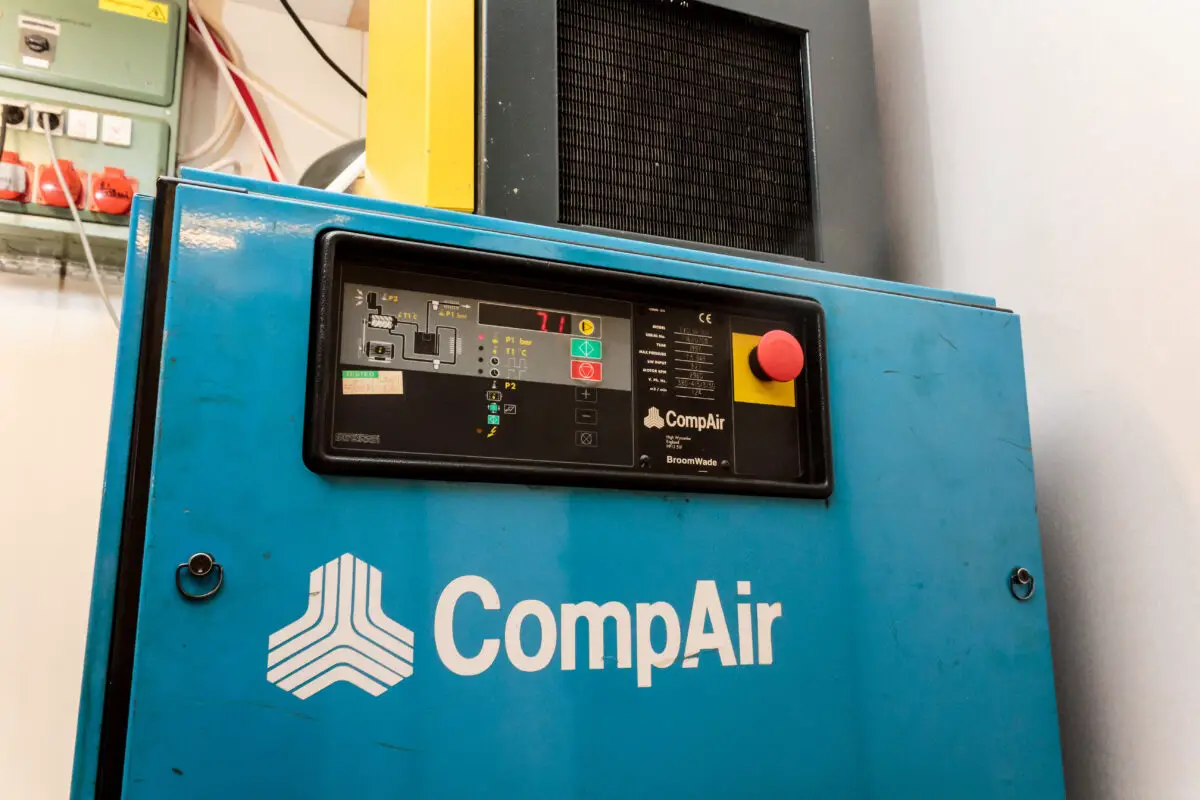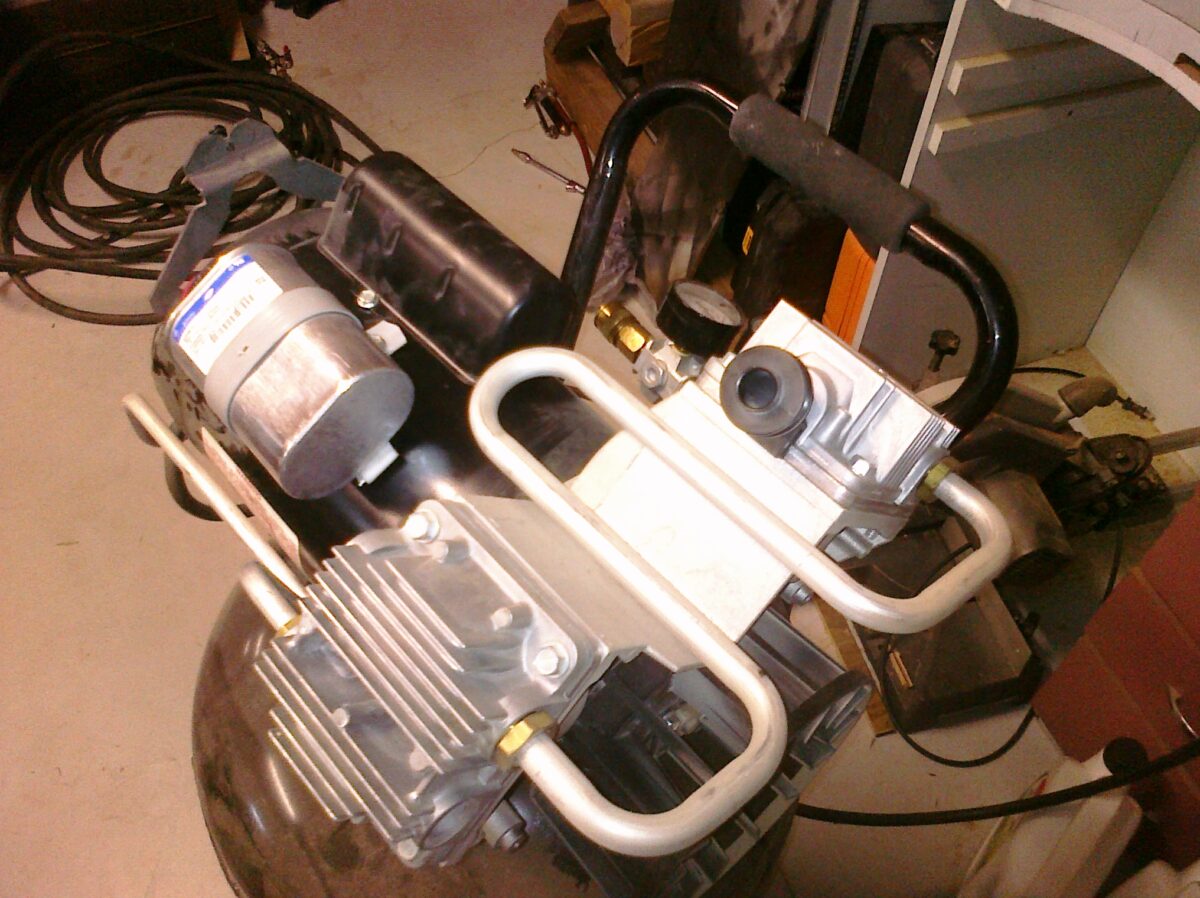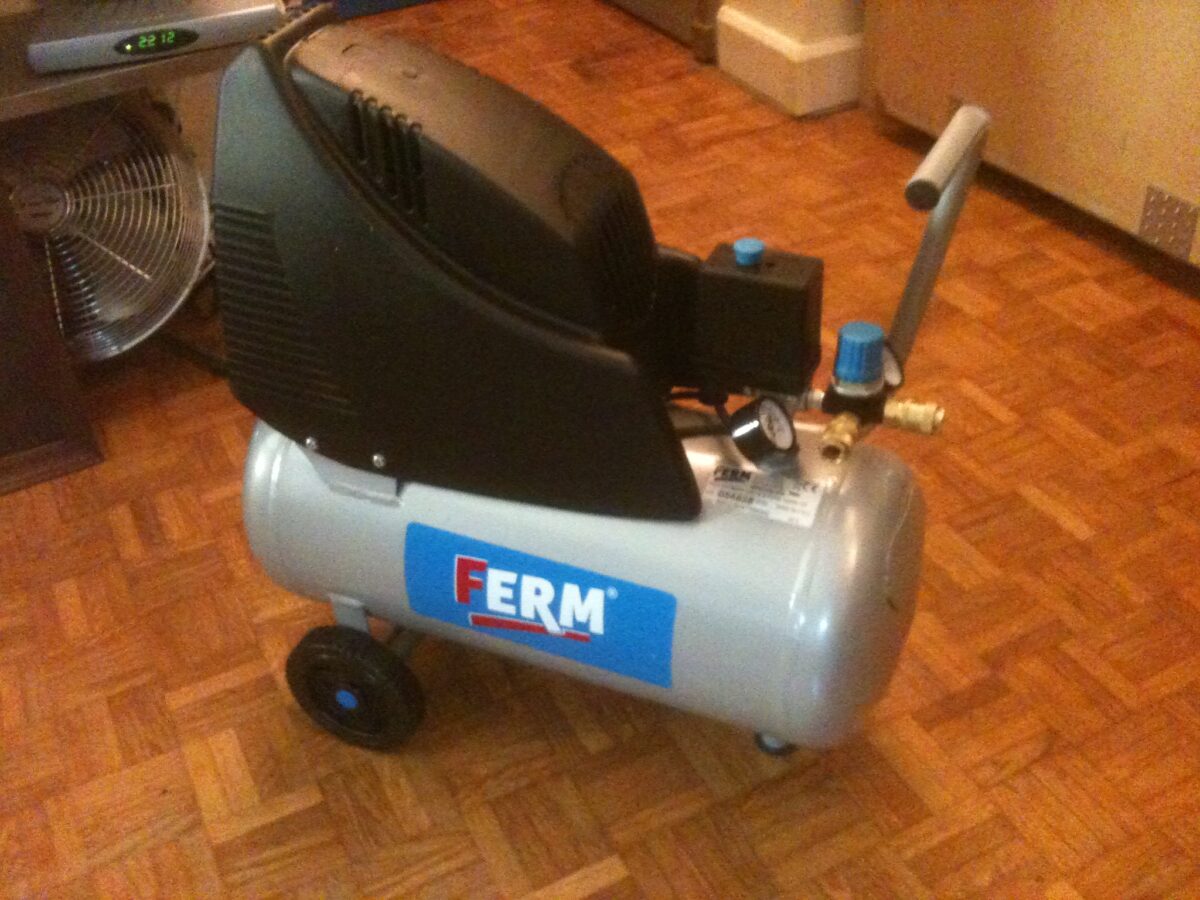Moisture in compressed air can cause issues such as corrosion, freezing, and compromised product quality. This is why air compressor dryers are essential for maintaining optimal performance.
I’ve installed various air dryers, letting me see how their individual operating mechanisms benefit compressors. For this reason, I will explain how does an air compressor dryer work.
How Does an Air Compressor Dryer Work?
While different types of air compressor dryers use diverse operating mechanisms, they mainly force compressed air through a specially designed membrane that allows water vapor to pass through. In contrast, the rest of the air continues downstream. This process removes moisture for various applications to ensure clean, dry air.
Understanding how these dryers work is crucial to choosing the best one for your needs. Once you grasp their functionality, you can decide which air dryer suits your setup. This ensures the highest efficiency and reliability in compressors.
Types of Air Compressor Dryers and Their Mechanisms
Different air compressor dryers achieve their goal through various mechanisms. Understanding how these dryers work is vital for choosing the best air compressor filter dryer for your needs.
| Type of Dryer | Moisture Removal Process | Material | Unique Mechanism |
| Refrigerated | Cooling compressed air to help separate and remove moisture | Heat Exchanger | Automatic draining |
| Desiccant | Desiccant material adsorbs moisture | Desiccants like silica gel or activated alumina | Regeneration cycle |
| Membrane | Filtering air using membrane | Thousands of tiny hollow polymer fibers with an inner coating | Brine draining |
| Deliquescent | Absorb water vapor from the compressed air | hygroscopic salt tablets | Selective permeation to preserve air quality |
How Refrigerated Dryers Work
I find refrigerated dryers a reliable and efficient solution for treating air. These systems are essential to keep your air compressor running at its best and prevent potential damage to air tools and equipment.
Cooling Process
Refrigerated dryers work by cooling compressed air to help separate and remove moisture. I achieve this by using an air-to-refrigerant heat exchanger, which cools the incoming air down to about 35 degrees Fahrenheit. After trying various refrigerated dryers, I found this cooling process efficient and cost-effective for managing moisture.
Air Separation
Once the compressed air is cooled, the moisture in the air condenses into droplets. At this stage, I employ the following mechanisms for air separation in refrigerated dryers:
- Air-to-air heat exchanger: This component pre-cools the incoming air and re-heats the outgoing air as it leaves the dryer. This makes the entire process more energy-efficient.
- Air-to-refrigerant heat exchanger: This component cools the air down to around 38 degrees Fahrenheit, further condensing the moisture for efficient separation.
Automatic Draining
One of the things I like the most about refrigerated dryers is that they separate moisture from the air through proper and automatic draining. This process helps maintain the desired pressure dew point of 35 to 50 degrees Fahrenheit in the compressed air. This keeps compressors dry and free from corrosion, which saves me from cleaning rust in the tank.
How Desiccant Dryers Work
Desiccant dryers have a reduced pressure drop, resulting in energy savings. Its process and compact size also result in a consistent dew point performance and a higher airflow capacity.
Absorption Process
The key mechanism that makes desiccant dryers so effective is the adsorption process. When compressed air flows into the dryer, it passes through a bed of desiccant material, typically composed of substances like silica gel, activated alumina, or molecular sieves.
These are among my go-to materials because they have a high affinity for water vapor, allowing them to absorb the moisture present in the air efficiently. As a result, the air that comes out of the dryer is significantly drier and more suitable for various applications.
Regeneration Cycle
As the desiccant material absorbs moisture, it becomes saturated over time. This means it can no longer remove water vapor effectively from the air. To maintain optimal performance, the dryer undergoes a regeneration cycle.
- One tower containing the desiccant material actively dries the incoming air while the other tower regenerates.
- Moisture is removed from the desiccant in the regenerating tower, typically through a reverse airflow process or by applying heat.
This cycle ensures that the desiccant dryer remains highly efficient and continues to dry your compressed air for all your DIY needs like spray painting effectively.
How Membrane Dryers Work
Membrane dryers play a crucial role in providing clean, dry compressed air for various applications like auto body work or vehicle coating. Their impressive mechanism is both effective and fascinating, ensuring our tools and equipment receive the best quality air.
Air Filtration
The first step in a membrane dryer process is air filtration. Before the air enters the membrane dryer, it is filtered to remove contaminants like oil and particulates.
This ensures that the air entering the dryer is as clean as possible, so the membrane can focus on removing water vapor.
Absorbing Water Vapor
The main mechanism driving a membrane dryer is the selective permeation of gas components. I have found that membrane dryers contain thousands of tiny hollow polymer fibers with an inner coating that absorbs water vapor.
When the filtered, wet compressed air enters the cylinder containing these fibers, the coating permits water vapor to pass through while retaining the rest of the air. This effectively dehydrates the air.
Draining Brine
After the membrane absorbs water vapor from the air, the brine, or concentrated liquid solution, must be drained away. What I also appreciate about a membrane dryer is its system that properly drains the brine to maintain optimal performance.
Here are the critical components involved in this process:
- Brine separator: Separates liquid solution from the dehydrated air.
- Drain valve: An automatic valve disposes of the collected brine.
- Purge pipe: A small amount of air is also purged along with the brine to ensure the system remains clean and efficient.
How Deliquescent Dryers Work
Deliquescent air dryers are a simple and cost-effective solution for removing moisture from compressed air.
Moisture Removal
In a deliquescent air dryer, I utilize hygroscopic salt tablets to absorb water vapor from the compressed air. As the air passes through the pressure vessel filled with these tablets, the salt dissolves and draws moisture from the air.
This process helps to lower the dew point by up to 20 degrees Fahrenheit. It makes the air drier and suitable for moisture-sensitive applications. To maintain the dryer’s efficiency, it is important to:
- Regularly inspect the sight window to ensure sufficient Dry-O-Lite tablets are present.
- Drain the air compressor at regular intervals, usually once per eight-hour shift.
Selective Permeation
Another key feature of deliquescent dryers is selective permeation. This process works by allowing specific molecules. In this case, water molecules pass through a membrane while blocking others.
This further aids in removing moisture from the compressed air while preserving the quality of the air itself. This process results in the low-maintenance and cost-effective nature of deliquescent dryers, which are also environmentally friendly.
Related Questions
How to Select the Right Dryer for a Compressor?
How Does a Heat of Compression Air Dryer Work?
The heat of a compression air dryer utilizes the heat generated during the air compression process to remove moisture from compressed air. The air passes through an adsorption material, which traps water vapor and allows dry air to exit the system. During the regeneration process, expanded air removes moisture from the adsorption material.
How to Main Air Compressor Dryers for Them to Work Properly?
To ensure your air compressors’ dryers run efficiently, clean the condenser of refrigerated dryers periodically. For desiccant dryers, examine the purge air system for leaks and proper operation. Membrane dryers need pre-filter replacements to maintain clean air entering the dryer, whereas deliquescent dryers require the replacement of tablets at regular intervals before they dissolve completely.
Conclusion
Air compressor dryers mostly use membrane tubes to collect and hold onto water vapor, and then dry air sweeps away the moisture on the membranes. These dryers are vital for providing quality compressed air by removing excess moisture. Knowing how air dryers work lets you easily choose the right one for your compressor.



